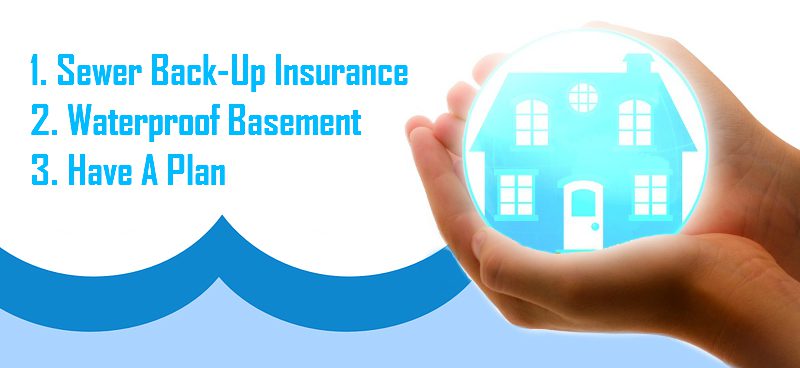Windsor, Ontario experienced devastating flood damage a month ago (we wrote about the Windsor flood in our previous blog post), leading many Canadians to ask why they are not covered. In Canada, overland flooding is not insured by any private insurer, other than a few available in Alberta. This is odd since floods are by far the most expensive natural disaster for both insurers and the federal government. Over 70 percent of Canadians believe they have overland flood coverage, but when they find out they do not, it is too late.
Flood Maps and Flood Insurance
One reason why insurers have been hesitant to offer overland flooding coverage is because there is insufficient data to formulate a policy. The flood maps for 900 communities across Canada were not only drafted in the 1970s but are also incomplete due to budget cuts. Flood maps can help insurers to assess the risks to homes as well as provide homeowners with vital analytics of their property and neighbourhood. Although the Ministry of Public Safety has put forward a proposal to fund new maps, until the government provides a comprehensive map to insurers, it’s unlikely Canadians will see overland insurance.
Costs Associated With Flood Insurance and Insurance Premiums
In 2013, the floods that affected 23 communities in southern Alberta cost the insurance industry an estimated $1.7 billion, while the July flood in Toronto that same year caused $850 million in damages. Keep in mind, that these are just the commercial costs, as most residential properties are not insured. These costs may be even higher the next time around as floods become more prevalent due to climate change and building costs continue to rise. Currently, most homeowners’ insurance policies provide coverage for backed-up sewage that floods basements. However, the reason many insurance leaders do not offer residential flood insurance is that most would not be able to afford the premiums.
Government Involvement
In countries like the US where overland flood insurance is offered, plans are provided in partnership with the government. For example, the National Flood Insurance Partnership works with 80 private insurers to bring flood insurance coverage to people who live in communities that meet the criteria for flood prevention measures to be taken.
Canada requires a similar program that has the federal government work with private insurers, citizens, and municipalities to protect Canadians and their homes. This means updating the maps, ensuring premiums are affordable, and enacting preventative measures in high-risk communities across the country.

What You Can Do Now to Protect Your Property From Flood
Any progress in the push for overland flood insurance will be slow, but there are ways to protect your property. Here are 3 things you should consider:
- Acquire other forms of insurance: Although overland insurance is not offered, you can still protect yourself from sewage back-ups or sump pump failure. This coverage is usually offered as amendments, not as part of basic homeowners’ insurance.
- Waterproof your basement: If your home has a basement and live in a flood-prone area, you should consider waterproofing your basement. Windsor residents who did so have seen little-to-no damage in their basements.
- Have a plan in place: In the case of a flash flood, make sure you are prepared to move furniture, appliances and everything else to higher ground.










